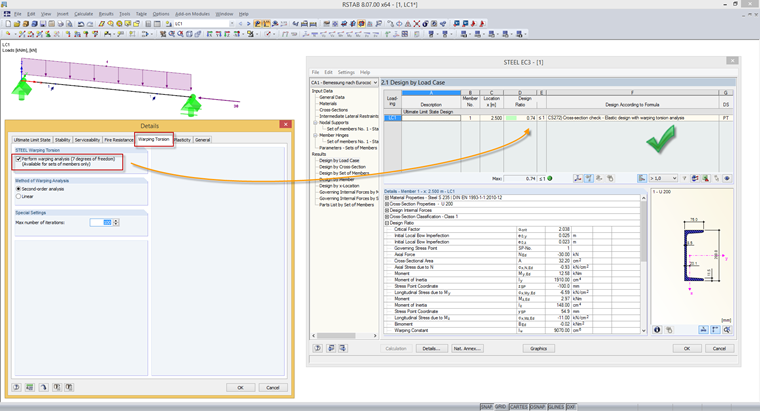For the selected sets of members, the cross‑section and stability analyses according to a standard are replaced by the torsional-flexural and lateral-torsional buckling analysis according to the second‑order theory, considering the application of imperfections with regard to mode shapes.
As the calculation starts, the program automatically generates a new equivalent load based on the applied internal forces (for example, LC1 to LC10) for the extended calculation with seven degrees of freedom (ux, uy, uz, φx, φy, φz, ω). On the basis of these equivalent loads and the imperfection regarding the first mode shape of the equivalent structure, the program then determines the new forces on the deformed structure (geometrically nonlinear). By comparing the elastic stress with the resulting stress of the new internal forces (N, Vu, Vv, Mt,primary, Mt,secondary, Mu, Mv, Mω) to the limit stress of the material, the calculation is finalized and provides the information about the load-bearing capacity.
This calculation applies the standard requirement of EN 1993‑1‑1 5.2.2 (7) a. Therefore, members with any cross‑section can be analyzed by performing the cross‑section design. This also means that you can design the asymmetric channel sections with a horizontally shifted shear center under the general load.
